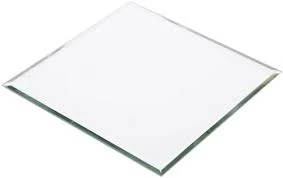

Understanding Standard Float Glass
Standard float glass is an essential material widely used in various applications due to its unique properties and advantages. This type of glass is produced through a process known as the float glass process, which involves melting raw materials such as silica sand, soda ash, and limestone at high temperatures. The molten glass is then floated on a bed of molten tin, creating a smooth and uniform thickness. This innovative manufacturing process results in glass that is not only clear and flat but also has exceptional optical quality.
One of the remarkable characteristics of standard float glass is its clarity. The float glass process eliminates impurities and bubbles, producing a material that effectively transmits light. This makes it an ideal choice for windows, doors, and facades in both residential and commercial buildings. The visual appeal and transparency offered by float glass contribute significantly to the aesthetic qualities of architectural designs.
The thickness of standard float glass typically ranges from 2 mm to 12 mm, allowing for versatility in its applications. Thinner glass is commonly used in interior space dividers, mirrors, and display cases, while thicker glass is preferred for structural applications and exterior installations. This wide range of thicknesses makes standard float glass suitable for a variety of uses, from decorative elements to safety features.

In addition to its aesthetic benefits, standard float glass is also valued for its durability. It is resistant to weathering, making it an excellent choice for outdoor applications. Properly treated float glass can withstand harsh environmental conditions, including UV radiation, temperature fluctuations, and humidity. This durability not only extends the lifespan of the glass but also reduces maintenance costs for building owners.
However, while standard float glass possesses many beneficial properties, it does have limitations concerning safety and insulation. Standard float glass can shatter upon impact, posing potential hazards to users. To mitigate this risk, various treatments, such as tempering or laminating, can be applied, enhancing its strength and safety. Laminated glass, for instance, consists of two or more layers of glass bonded by a plastic interlayer, which holds the shards together in case of breakage. This makes it a preferred option for applications where safety is paramount, such as in car windshields and skylights.
In terms of thermal performance, standard float glass does not provide significant insulation on its own. However, advances in technology have led to the development of coated and double-glazed options. Low-emissivity (Low-E) glass and insulated glazing units (IGUs) can significantly improve the energy efficiency of buildings by minimizing heat loss and reducing glare. These options cater to environmentally conscious consumers and contribute to energy savings in both residential and commercial sectors.
In conclusion, standard float glass is a fundamental material in the glass industry that combines clarity, versatility, and durability. It has established itself as a preferred choice in various applications ranging from windows to interior designs. Despite its limitations regarding safety and insulation, advancements in technology have led to enhanced products that address these concerns. As the demand for energy-efficient and aesthetically pleasing building materials continues to rise, standard float glass will undoubtedly play a pivotal role in architectural innovation and design. Whether used in modern skyscrapers or traditional homes, float glass exemplifies how functionality and beauty can coexist in building materials.